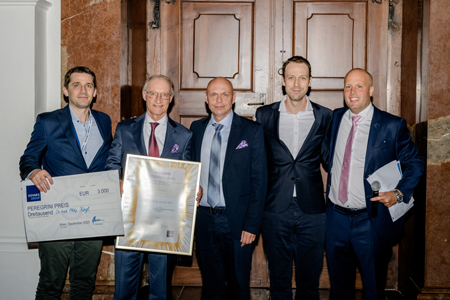"Comprehensive Characterization of the Immune Cell Infiltrate in Chronic Leg Ulcers"

"Veränderungen des Plasmaprotein-Profils nach Sklerotherapie mit Polidocanol bei chronisch venöser Insuffizienz: Eine Single-Center-Kohortenstudie"
"Schaumverödung versus Exhairese von Seitenastvarizen. Zwei Methoden im Vergleich bezüglich Effizienz, ästhetischem Outcome und Patientenzufriedenheit"
"m-Teleulcus": Entwicklung einer mobilen Applikation zur teledermatologischen Betreuung von PatientInnen mit Ulcera cruris
"Retrospective analysis of routine use of a double heat cycle (DHC) during radiofrequency segmental ablation (ClosureFAST) of saphenous veins"
"Vergleich zweier unterschiedlicher Sicherheitsdistanzen zur sapheno-femoralen Mündung bei endovenöser Laserablation der Vena saphena magna: eine prospektive randomisierte doppel-blinde Studie"
Asymptomatic deep vein thrombosis and superficial vein thrombosis in ambulatory cancer patients: impact on short-term survival
Histology of saphenous veins after treatment with the ClariVein® device - an ex-vivo experiment
Does Endovenous Laser Ablation Induce Endothelial Damage at the Saphenofemoral Junction?
Martorell Hypertensive Ischemic Leg Ulcer
Venous valves and major superficial tributary veins near the saphenofemoral junction
Teledermatological Monitoring of Leg Ulcers in Cooperation With Home Care Nurses
Seasonal variations of deep vein thrombosis and its influence on the location of the thrombus
Fink A.M., Mayer W., Steiner A. – Wien
Extent of thrombus evaluated in patients with recurrent and first deep vein thrombosis.
Responsiveness of human varicose saphenous veins to vasoactive agent
High Ligation and Stripping of the Long Saphenous vein Using the Tumescent Technique for local Anesthesia
Mayer W., Hirschwehr R., Hippmann G., Odpadlik H., Bayer P., Partsch H. – Wien
Vollblut Immunoassay (Simpli RED) versus Plasma Immunoassay (Nyco Card) in der Diagnostik der tiefen Venenthrombose
The prevalence of deep venous thrombosis in patients with suspected paradoxical embolism
Langer K., Seidler C., Partsch H. – Wien
Ultrastructural study oft he dermal microvasculature in patients undergoing retrograde pressure infusions
